I first explored the ruins of Grey Abbey back in 2011 when I first started my Ruin hunting. At the time the structure was in pretty bad shape and was completely fenced off, so I didn’t get to have a good look around. A few weeks ago I stopped off as the fencing had now been taken down. Situated within a graveyard to the south of Kildare town, the ruins of the Abbey can be easily accessed from either the Kildare Village Outlet boardwalk, or from the graveyard side on the Grey Abbey road adjacent the new Aldi store. The graveyard enclosure consists of a rectangular boundary wall of mortared stone with an entrance gate in the east. It appears that the boundary wall also forms part of the south wall and gable of the Abbey. Whilst interesting in its own right, the earliest legible burial markers could find appear to date from the 19th century.
The abbey is alleged to have been built by Lord William De Vesci for the Franciscan Friars around 1254 and rumoured to have been later completed by Gerald Fitz Maurice, Lord Offaly, for the Franciscan monks. Let again it appears that the abbey got its name from the colour of the habits worn by the Franciscan monks. De Vesci later went on to construct White Abbey for the Carmelite order in 1292. It is believed that at least four Earls of Kildare are buried in the graveyard here. John Fitz Thomas, 1st earl of Kildare was buried in the church in 1316, Thomas Fitz John, 2nd earl was buried in the Lady Chapel in 1328, followed by his son, Richard, in 1329.
These friars were not short of money after receiving a royal grant around 1276. The friary was considerably extended in 1350 under the patronage of Joan de Burgo. When surrendered in 1539 under the Act of Suppression the considerably large Friary was said to have been completely abandoned by 1547. The friary included a church and belfry, dormitory, hall, three chambers, kitchen, cemetery and two gardens, while in November 1540, it has been recorded that all the buildings except the church and most of the cloister had been burnt in the previous May by the native O’Conor clan.
By 1621 the friary was re-established with the surviving remains comprising of a ruined and overgrown nave and chancel church built of roughly coursed limestone blocks with no visible quoins or jambs surviving. The upstanding structure is mainly of 13th century date; the E window and probably the W window are 15th century insertions, while the buttresses on the N wall of the chancel are possibly 14th century. From a drawing by Austin Cooper in 1791 it is believed that there were one or possibly two transepts, the N one opening onto the N chapel. Only the NW angle and the partially rebuilt S wall of the nave survives.
The north splay of the west window is still visible, and in the south wall there are three round-arched niches. A granite sill of a larger and possibly earlier window is visible in the outer face of the wall. The north wall was supported by five, free-standing buttresses, which have parted from the wall over time, and the wall contains six, poorly preserved lancets. Two portions of the original S wall survive, at its E and W ends. Nothing remains of the N side-chapel, said to have had a pointed window. In 1991, archaeological trial trenching took place prior to the proposed building of a bungalow and garage to the N of Grey Abbey turned up five shards of local medieval pottery and a single shard of post-medieval tankard from the topsoil. Small fragments of burnt animal bone were also recovered.
In 2004, archaeological test trenching took place before the development of the large commercial district now known as the Kildare Village Outlet. 15 trenches were excavated across two fields, including the friary grounds, A red-brick structure, possibly representing a holy well. In 2005, the remains of the friary to be directly impacted upon by the development, including the Friars’ Well, were excavated under an extension to the existing licence. The prehistoric remains of a Bronze Age fulacht fia, a cremation burial and an Iron Age kiln were found.
For these and more of my images, why not visit my Website or join me on Facebook or Twitter.

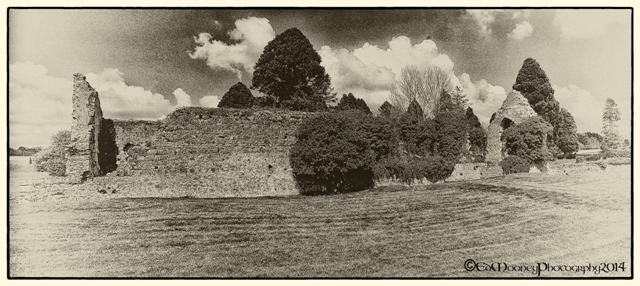
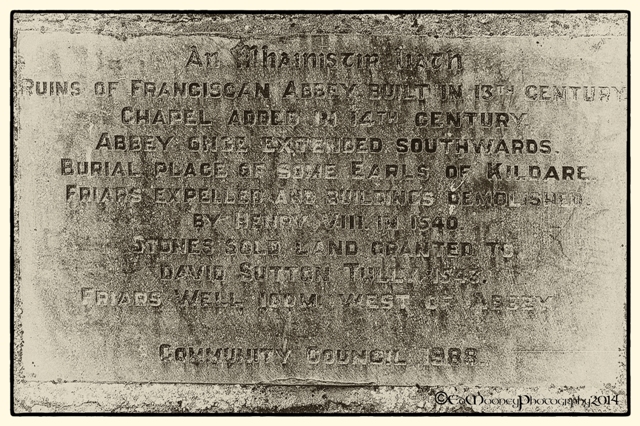


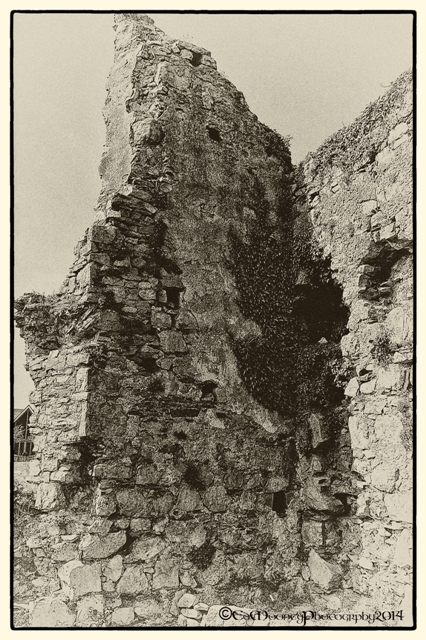
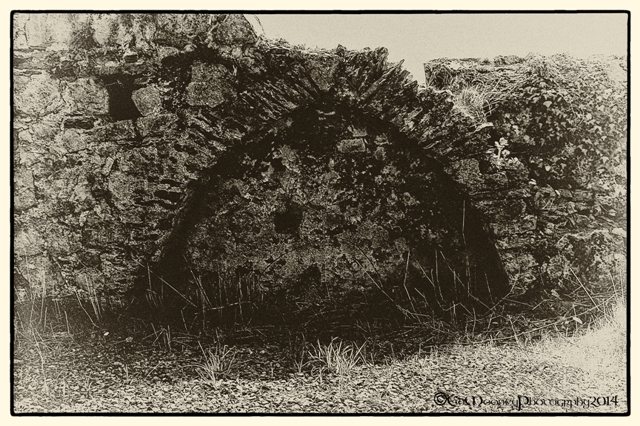
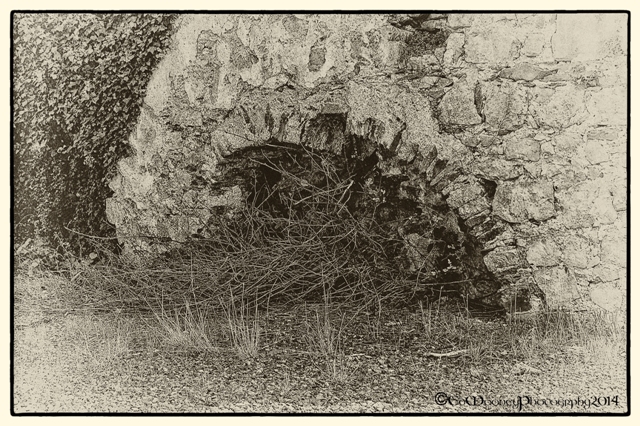
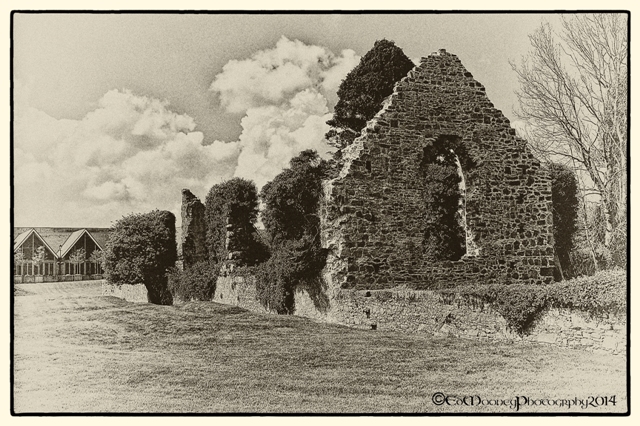
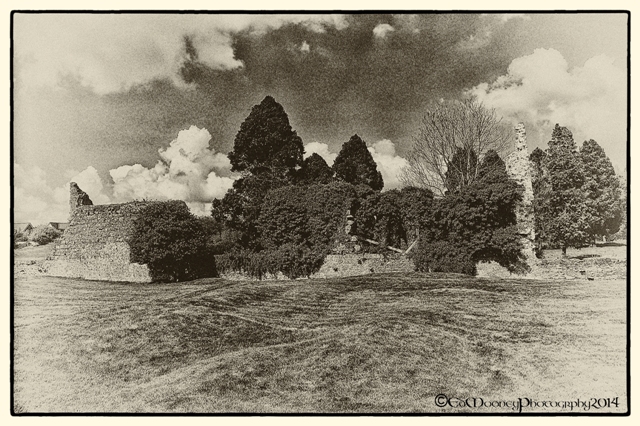





That third shot from the bottom… really nice!
LikeLiked by 1 person
Great photos as always. It seems wrong to disturb this place and others like it, for the purpose of building any structures. There is so much history.
LikeLiked by 1 person
Thanks John, unfortunately money speaks louder than heritage 😦
LikeLike
Another fascinating site with multiple layers of history… really enjoyed this piece Ed. What have you done differently with the images? They’re not your usual style of late, quite sepia and a lot lighter…yeah, I know, I’m really giving it away that I’m no photographer lol! I love the pics, just wonder how you achieved the look.
LikeLike
Pingback: Grey Abbey
“or from the graveyard side on the Grey Abbey road adjacent the new Aldi store”
I had to read this line more than once to believe it.
They seriously build a supermarket right next to a graveyard/ruin? That sounds just so wrong…
Though I’m afraid we do have a couple of such weirdly placed buildings as well…
LikeLike
It’s not the first time its been done and it sure won’t be the last. I only heard yesterday that they are planning more destruction out at Tara/Skryne. 😠
LikeLike
I really don’t understand peoples need to destroy these historic sites…
Sure, other people want a place to live in and they are kind of occupying possible space, but there are far more suitable locations somewhere else…
They won’t start anything serious before we get the chance to visit it in November, will they?
I’m by the way already really excited for the trip, thank you so much for all the help you’ve been given me/us so far!
LikeLiked by 1 person
Completely agree, its still safe for the moment, we held off the motorway being built for a few years so I doubt you will see it happen on your visit.
Hope you have a great time and enjoy your stay, it was my pleasure to help 🙂
LikeLiked by 1 person
Yes – different. Its like the first photos that were taken. I like them. My favourite is the Danger keep out – the ‘arch’ inviting you in however the sign says keep out 🙂
LikeLike
Thanks Veronica, I think the old style effect really suits these places 😃
LikeLike
I have always been fascinated with ruins. Great job!
LikeLiked by 1 person
Thank you, I love them too 🙂
LikeLike
Great photos and interesting post. It seems a lot of us are attracted by ruins, and the stories they tell.
LikeLiked by 1 person
When I starting my ruin hunting adventures, I was actually shocked at how well they were received and the amount of interest it attracted 🙂
LikeLike
Thanks for the ‘like’ – BTW, nice pix!
LikeLiked by 1 person
My pleasure Chris, Thanks 🙂
LikeLike
These almost look like sketches. Love them.
LikeLiked by 1 person
Thank you Cynthia 🙂
LikeLike
When I was in Europe I loved visiting ruins. My imagination went wild. I also love black and white photos. For some reason detail seems clearer in that format. Many thanks for stopping by my blog, I appreciate it.
LikeLiked by 1 person
My pleasure Connie and thank you.:-)
Your dead right there is something special about shooting these ruins in B&W 🙂
LikeLike
Pingback: Grey Abbey – Monochrome Madness Challenge | EdMooneyPhotography